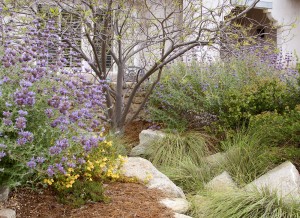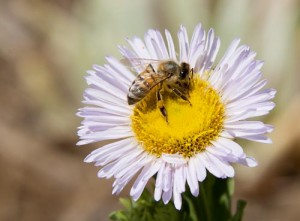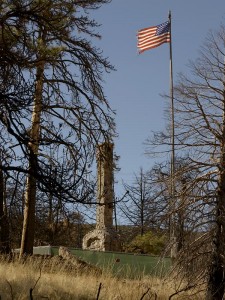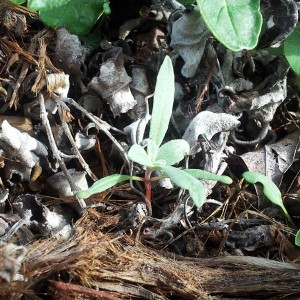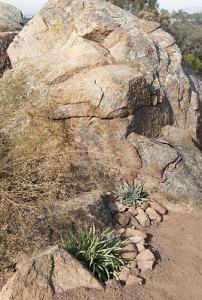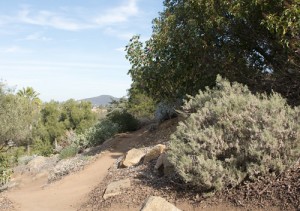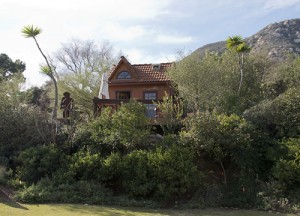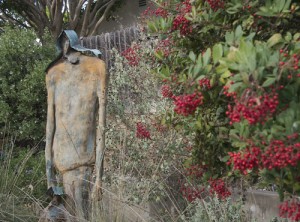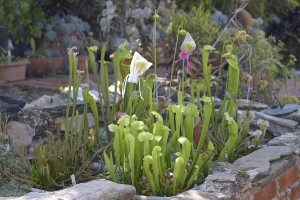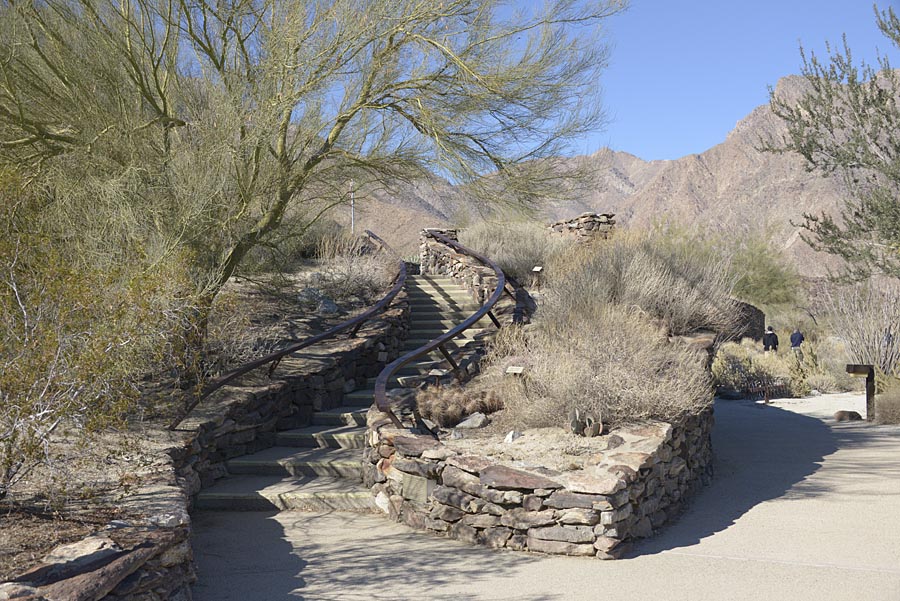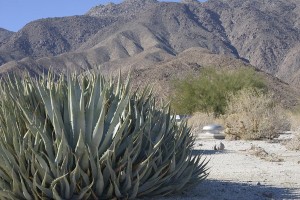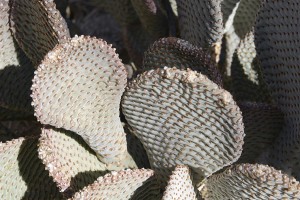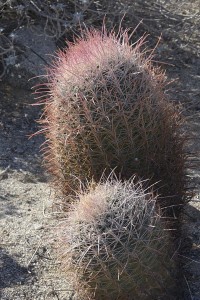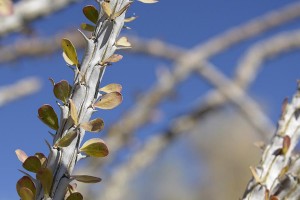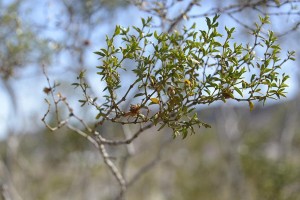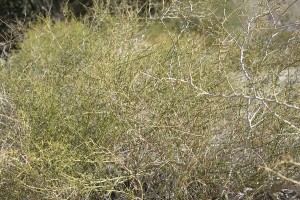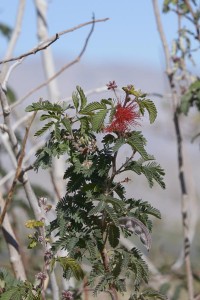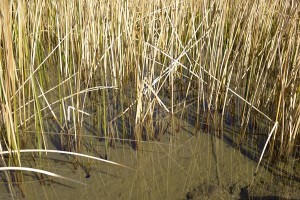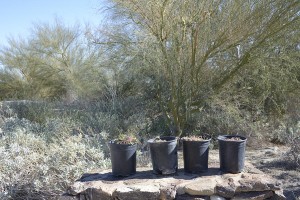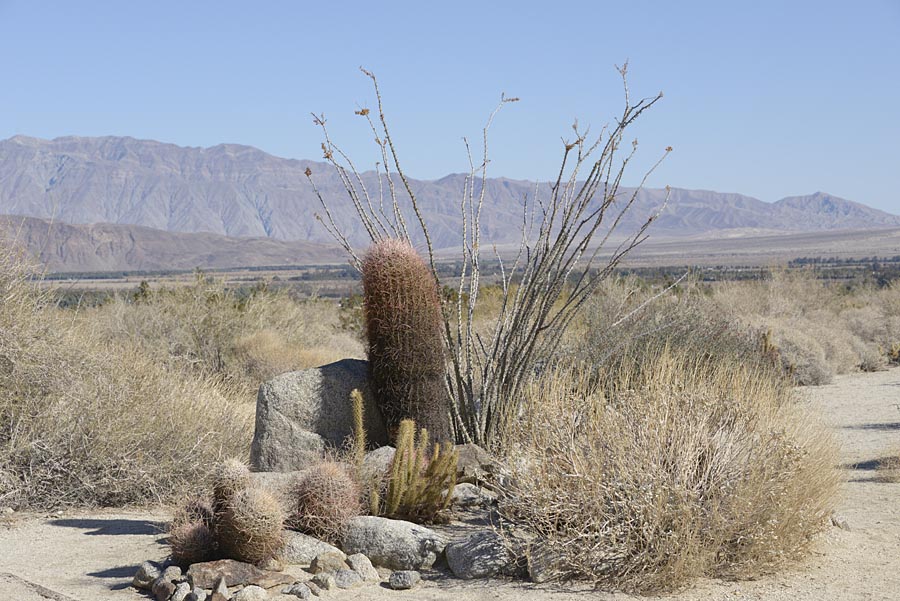This will be my second year helping out with the photography for the spring native garden tour of the San Diego CNPS chapter. Last year I supplied a few of the images, but I mostly helped editing photos that others had taken, sharpening, cropping, and color-matching everything from cellphone snapshots to nearly-perfect finished photos. This year I actually had a chance to go out a couple days during peak bloom to get some source material myself, and there’ll be a few more of my photos in the mix.
9:30 a.m. to 4:30 p.m. each day
In taking the photos I did a certain amount of randomly wandering around gardens, looking for pretty pictures. But in the end I tried to select for images that showed gardens as intentionally-created arrangements of collections of plants. Although native gardeners often aim to recreate slices of nature on their properties, I tried not to include too many photos of plants that could be indistinguishable from photos that could have been taken out on a hike. These are gardens, after all.
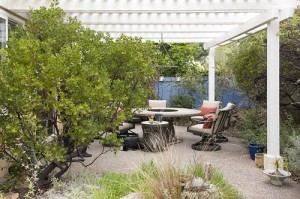 Also, I tried to get a few photos that might appeal to readers of aspirational shelter mags like Sunset, Dwell or Martha Stewart Living. (Five years ago I might have added “viewers of HGTV” to this sentence, but that network has long distanced itself from the “G” in its name. Pity.) A certain part of the public is immune to the siren call of the consumerist lifestyles highlighted in the pages of these magazines, and a large portion of the native plant community is even actively working against lifestyles that tax the earth’s resources unnecessarily. Still, good intentions are no excuse for bad design, and the gardens scheduled for the tour show had plenty of intelligent and beautiful design details that made for good photos.
Also, I tried to get a few photos that might appeal to readers of aspirational shelter mags like Sunset, Dwell or Martha Stewart Living. (Five years ago I might have added “viewers of HGTV” to this sentence, but that network has long distanced itself from the “G” in its name. Pity.) A certain part of the public is immune to the siren call of the consumerist lifestyles highlighted in the pages of these magazines, and a large portion of the native plant community is even actively working against lifestyles that tax the earth’s resources unnecessarily. Still, good intentions are no excuse for bad design, and the gardens scheduled for the tour show had plenty of intelligent and beautiful design details that made for good photos.  A garden-tour audience is broader than the core native-plant community, and many have some shelter-mag aspirations. What would be a better goal for an event than to show that you can have compelling design that treads lightly on the earth, and at the same time gives back by providing food and shelter for wildlife?
A garden-tour audience is broader than the core native-plant community, and many have some shelter-mag aspirations. What would be a better goal for an event than to show that you can have compelling design that treads lightly on the earth, and at the same time gives back by providing food and shelter for wildlife?
The tour will highlight work by accomplished local designers as well as homeowners, and runs the stylistic gamut from the orderly, decidedly gardenesque spaces of Greg Rubin (as in the one in the tour’s signature image above) to near-wild spaces designed by Wes Hudson. And in between those poles you’ll see lots of other approaches to garden-making.
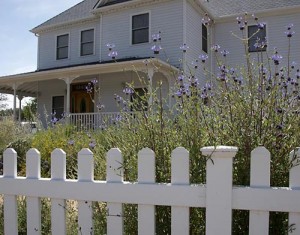
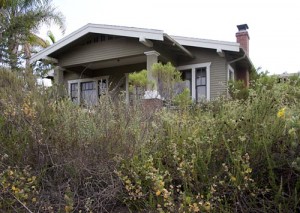
For those of you not in San Diego County, you have almost four months to make your travel arrangements. (Really, it’s not such a stretch. Last spring I ran into a couple from Portland that had read about the event on this blog. Pretty wild!) It’s going to be another great garden tour, and I hope to see you there!
Thanksgiving in the mountains
Thanksgiving Day saw us on the road, with some of that time exploring the crest of the Laguna Mountains about 90 minutes to the east of here. The stretch of S1 over the crest has one of those wonderfully poetic names: Sunrise Highway.
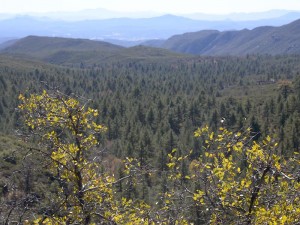
There’s a chance (ever-diminishing as I look at the forecasts) of winter weather on the way, but things were still blooming away here and there… A patch of Corothrogyne (Lessingia) californica, buckwheats, Datura wrightii, with both flowers and seed pods, a living example of optimism and practicality living side by side…
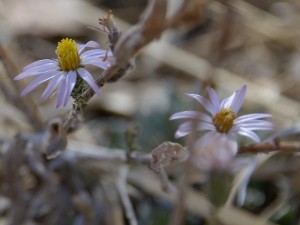
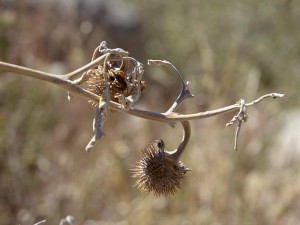


Patches of yellowing leaves let you know it was fall, but it’s a pretty low-color year this time around. (The California Fall Color blog has the same opinion, and blames it on the bark beetle and drought.) Without the magic of Photoshop this dull photo would have been even duller.
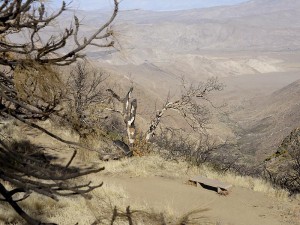
Anyone traveling this route must stop at this amazing overlook down Oriflamme Canyon and over Vallecito Valley (which translates redundantly into “Little Valley Valley”). The valley floor lies more than a mile below the viewpoint, but the atmospherics today were amazingly clear. Since my last visit, the Chariot fire had swept through the area, taking out over 7,000 acres of landscape and almost 150 structures, including the Shrine Camp and one of the cabins at the Sierra Club’s historic Foster Lodge. That was back in July of 2013.
Like most California wildfires in this area, this one had a human origin–a BLM Jeep igniting some dry plants beneath it. Natural processes are geared to try to go back to some semblance of where things were before the fire, but the disproportionate number of human-source fires presses hard on the plants. A landscape that can recover from burning every century doesn’t do well when stressed unreasonably. Invasive plants can move in and change the makeup of the vegetation completely.
This area can see some pretty extreme wind speeds, and this spot is not far from the place where wind gusts topped 100 mph this past May during our most extreme Santa Ana Wind condition in recent memory. You might guess that from the shredded flag. Add some embers to winds like that and you have the perfect firestorm.
But…it wasn’t doing that on this bright November day, and for that we were thankful, not to mention being thankful for the great scenery and looks at the great plants that live here.
You can take your own version of this trip courtesy Google Street View. I’ve placed the marker right at the big viewpoint. Enjoy your tour along the Sunrise Highway!
a little seed viability experiment
I often talk about all the weeds that come up in the garden. But fortunately there are lots of good guys coming up nicely.
One little experiment the past two autumns and winters has been seeing how well well old seed would germinate. Many gardeners end up with a drawer full of old seed packets, and I’m definitely one of them. The little envelopes can often say something like “Packed for the 2012 season” on them, but in reality you can often get good germination from seed that’s one or more years beyond the “buy by” date. Depending on the species, if you keep the unused seed dark, dry and fairly cool, you can let you have excellent results for several years to come. For this highly unscientific test I tried out seeds of several California natives:
- Baby blue eyes (Nemophila menziesii)
- Chia (Salvia columbariae)
- Scarlet bugler (Penstemon centranthifolius)
- Showy penstemon (Penstemon spectabilis)
- Parry’s phacelia (Phacelia parryi)
- Chinese houses (Collinsia heterophylla)
- Beach evening primrose (Camissonia cheiranthifolia)
There was also a year-old, unopened packet of globe gilia (Gilia capitata) that I thought I’d lost but much later found underneath the passenger’s seat of the car. It had spent all of spring and summer and fall inside a closed-up vehicle–abysmal seed storage conditions, nothing like what you find being used in seedbanks like the Svalbard Global Seed Vault, where temperatures are maintained around zero Fahrenheit and humidity also down near to just a few percent.
To increase chances that I’d have at least some plants I sowed the seed thicker than I might have with fresh seed. Some of it was sown directly on the surface of the garden soil. Some of it was mixed with topsoil. I tried to keep the areas somewhat moist, but I failed so that everything dried out completely more than once. Like I said, this test was highly unscientific.
So…drumroll please…
At least two plants of the Chinese houses germinated and made it to flowering.
Unfortunately I think that the Parry’s Phacelia for the last two years have been no-shows. and I’d say the same for the two penstemons. Also the same for the baby blue eyes. It’s always possible that I mistook some of these for lookalike weeds and pulled them, though–trust me–I haven’t been particularly meticulous in the weeding department!
Chia also came up pretty well, though not nearly as lushly as the Camissonia .
 And remember the abused packet of globe gilia seeds? The ones that spent three seasons locked inside a car? I was expecting a big fat zero germination rate, but these came up the strongest of all. Look at all that green!
And remember the abused packet of globe gilia seeds? The ones that spent three seasons locked inside a car? I was expecting a big fat zero germination rate, but these came up the strongest of all. Look at all that green!
Since this test was so randomly conducted you can’t really write off that Nemophila, Phacelia and Penstemon seed is short-lived. It really could have been my rough conditions for germinating seeds that kept them from coming up. But the Camissonia, chia, Collinsia and–most spectacularly–Gilia not only will come up when they’re a little stale, but are also a little more immune to less-than-ideal germination conditions–like out in nature.
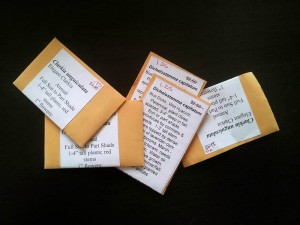 Armed with this information I picked up some marked-down seed at this fall’s native plant sale, some of last year’s stock that had been marked down to half. Call me cheap. Call me curious. But if I’m successful this spring could be pretty flowery in the garden. Wish me luck!
Armed with this information I picked up some marked-down seed at this fall’s native plant sale, some of last year’s stock that had been marked down to half. Call me cheap. Call me curious. But if I’m successful this spring could be pretty flowery in the garden. Wish me luck!
And what kind of success have you had with old lots of seeds?
autumn migration
 Migrations are in the air. East of here, along the Pacific Flyway, birds have been aerially changing their zipcodes. With impending winter and shortening days, my own mind shifts towards changing things up.
Migrations are in the air. East of here, along the Pacific Flyway, birds have been aerially changing their zipcodes. With impending winter and shortening days, my own mind shifts towards changing things up.
This blog has been on hiatus of late. Part of it’s been my distractions into other, shiny directions. But a significant part of it is my web hosting service that has sunk from being one of the brightest options seven years ago to becoming a quagmire that has left me unable to post or even maintain the back end of the pages for many months. [Insert frowning, exasperated emoticon here.]
[ Lost in the Landscape ] however now has a new home on new servers, and it’s got a new look. I enjoyed the chance to update the visuals a bit and move to a theme that’s more friendly towards mobile devices. But along the way a few things have gotten broken.
- If you were a previous subscriber to email notifications of new posts, you will need to renew. Unfortunately the old system won’t let go of the hundred-plus names that were on the subscriber roles. The new system here is way more sophisticated, and allows you to unsubscribe as easily as it was to sign up. Just click on the “Subscribe” tab to get started.
- If you received post notices via RSS feeds, you’ll need to re-subscribe using the link in the left panel.
- Many of the older posts contain links that no longer link. That goes with the territory of anything of any age on the web, but the modified architecture here has caused some of the links to internal blog content to stop working. I will be going back and spot-fixing what I can, but feel free to let me know if you spot anything particularly egregious.
- The old blogroll is gone, but I’ll be bringing it back, refreshed and more current.
I’ve also sprung for a blog domain name after–what?–almost seven years? No worries. Once I complete the transition of the entire site the old address should redirect automatically to this one. And the new one should be easier to remember. That will probably take a few weeks to complete. lostinthelandscape.com will bring you here immediately. (UPDATE November 21: The redirect to this domain is already working.)
I’ve mentioned it a few times recently, I’ve been meaning to get back to posting at least occasionally. Things are happening in the garden, and a whole new season is on the way, and garden tours, and cool art stuff…
native plant-themed fabric and giftwrap
I’ve been playing.
In the darkness of late December I started to think about spring and the plants and flowers that were just a few months away. I’d recently started spending some time at the Spoonflower site where you can upload your own designs for fabric, wallpaper, giftwrap and decal. What kinds of patterns could I make out of my old photos of California native plants?
Here are a few I came up with, and there are a few variants up at eventually I’ll add a few more as time and life permit.
I’ve put these designs up at a little storefront at the Spoonflower site. The cost of these one-off custom prints is steep compared to paper and fabric produced in quantity overseas, but you’re welcome to use these designs if you’d like to make a special pillow or wrap up a special package. And if you do that Spoonflower sends me a little kickback that I can apply to future design and printing projects.
California Bush Anemone (Carpenteria californica) on Periwinkle

California Bush Anemone (Carpenteria californica) on Black

Hummingbird Sage (Salvia spathacea), version 1

Hummingbird Sage (Salvia spathacea), version 2

Fort Miller Clarkia (Clarkia williamsonii)

Chalk Dudleya (Dudleya pulverulenta), Medium Size–Sepia

Chalk Dudleya (Dudleya pulverulenta), Big Print, Graphic and Gray

Chalk Dudleya (Dudleya pulverulenta), Big Print, Natural Colors

spring garden tour
Okay, it’s been a while since my last post, but this is definitely something I didn’t want to let pass unnoticed. Fifteen private and public gardens in northern San Diego County will join together for the Garden Native Tour 2014. It all happens March 29-30.
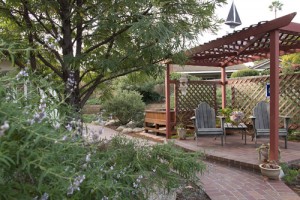 I helped with the photography for the event, either going out to shoot some gardens, or making the garden photos people took look even more glamorous.
I helped with the photography for the event, either going out to shoot some gardens, or making the garden photos people took look even more glamorous.
I shot these photos one bright January morning. Expect these gardens to be even more inviting as spring kicks the plants into high gear.
You’ll see a variety of garden styles: comfy informal home spaces, garden spaces with adventuresome hiking opportunities, a home mixing natives with a working vineyard, gardens that showcase plant collections, a mature lakeside space perfect for entertaining, an institution that sets art-making in a warm native landscape…you’ll be inspired.
Tickets to the tour and to a pre-tour fundraiser where you can try out your new cocktail attire can be purchased online [ here ].
I hope to see you there!
safely in pots
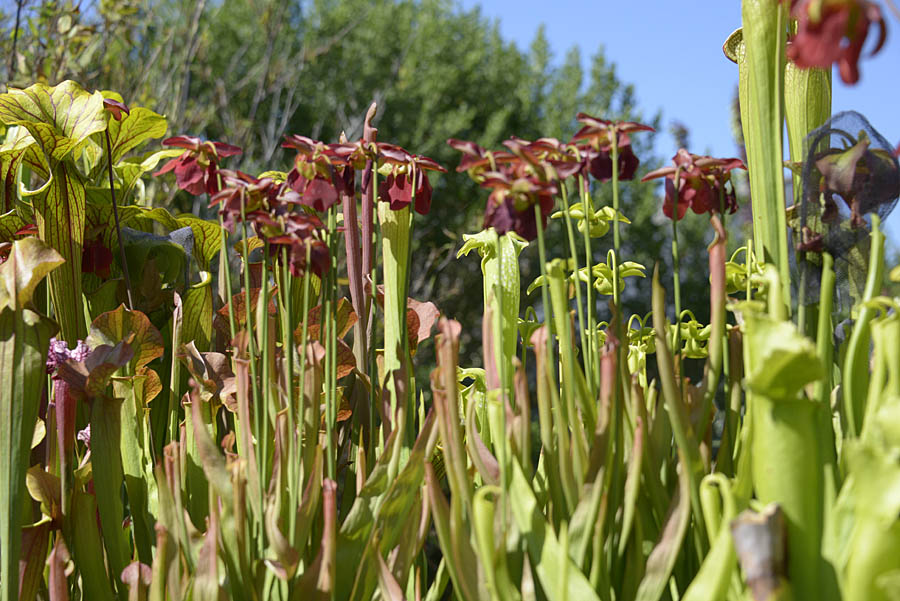
The bog gardens have been looking really good this spring. Plants that I got as single-growth divisions are establishing themselves, and smaller seedlings are starting to approach their awkward but exciting teen years.
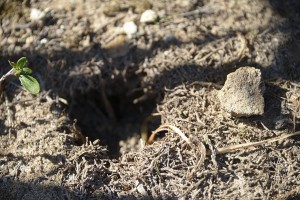
Rather than drag you down the rabbit gopher hole, let me show you some of this year’s successes in the bogs.

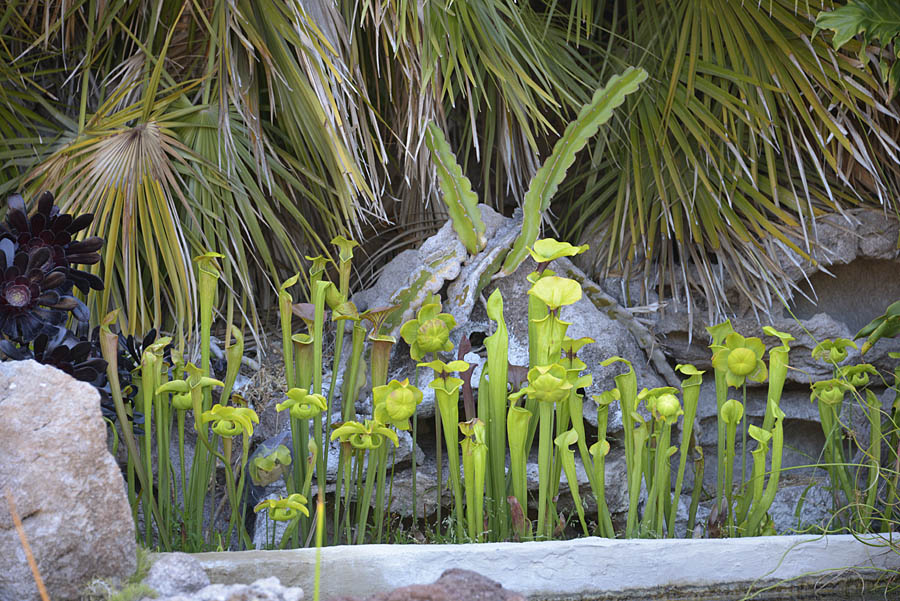
Another failed pond morphed into this other bog, using the same planting techniques as the upper pond bog. These plants share the same tub of growing medium as five or six other plants. This bog you can walk right up to, so it features smaller growing plants are almost eye level. This is where many of the small all-green plants go, along with species or hybrids that really need to be viewed up close to appreciate them.
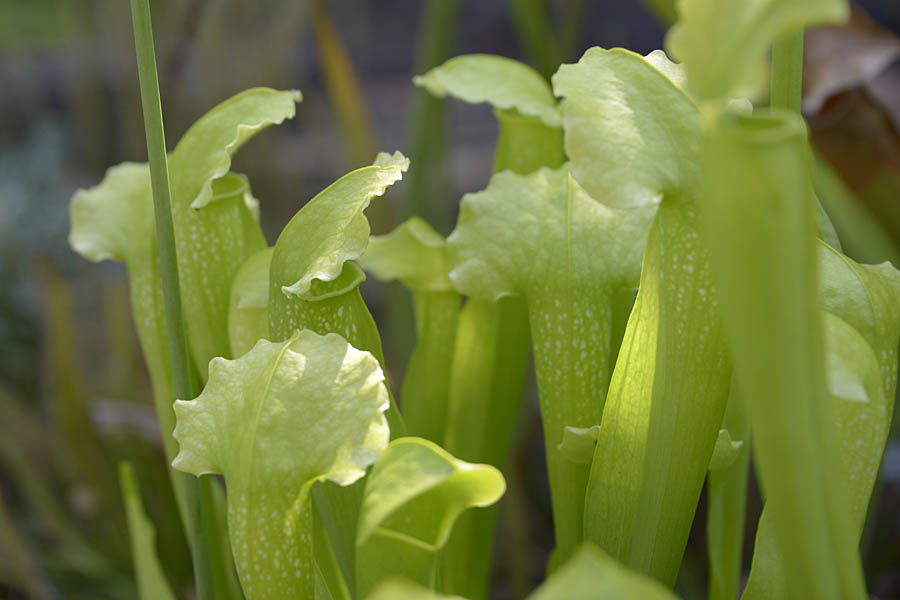
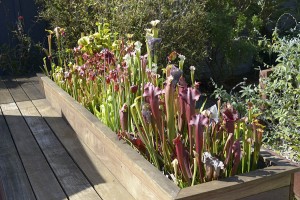
This is where a lot of the big, splashy numbers go. These are plants that look good from across the garden or bear inspection from close-up while seated on the bench.
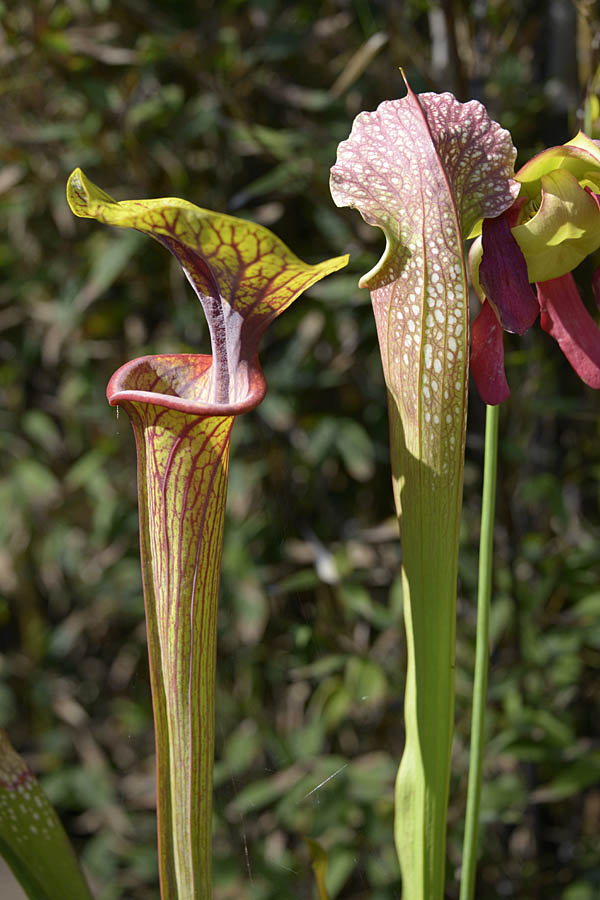
Yah, it’s been a tough year, with life sending us nettles and then gophers. But at least the plants in containers are thriving.
unbearably cute
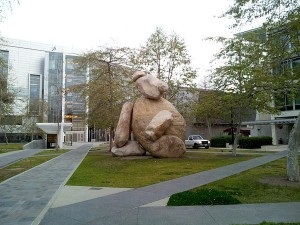
Here’s a fun artwork from the Stuart Collection at UCSD, Tim Hawkinson’s Bear. At almost 24 feet tall and 180 tons it’s a little bigger and heavier than your average Steiff bear, but it’s gotta be at least as cute.
It’s a pretty simple idea: take eight big to really big boulders and pile them together, just so. There’s a fair amount of engineering that keeps the piece from falling apart, but all the tech stays in the background. Nothing intrudes into the piece’s overscaled cuteness and child-like sense that anyone could assemble a few rocks together like this.

In our stats-obsessed world people will compare the piece’s “mere” 180 tons to the 340 ton mass of the monster rock that achieved superstar status as it got transported into downtown Los Angeles to become the central element in Michael Heizer’s Levitated Mass at the LA County Museum of Art. (You can read about the piece–and the rock–lots of places, including [ here ] on fellow blogger Ryan’s Dry Stone Gardening.) But, hey, 180 tons is already double the weight of a space shuttle, so I’ll allow myself to be impressed.
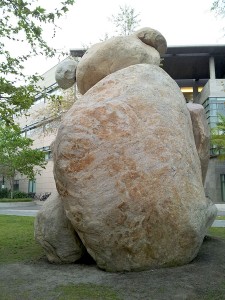
The stone comes from a quarry up in Pala, in the foothills about an hour to the northwest. It looks a lot like the boulders of our backcountry: smooth-surfaced, light-colored, with a warm rosy orange glow. A geologist once told me that at least some of the stone that makes up some of the adjacent formations is quartz monzonite, a felspar-rich mineral adjacent to granite on a family tree of plutonic rocks. But whatever it’s made out of, granite, quartz monzonite, it’s cool to have a big pile of big rocks from East County, remixed into a giant bear.
But one thing keeps bugging me about the work. The campus mascot of UC Berkeley, Cal, is the bear, and I keep wondering whether the artist got it wrong and thought that all the UC campuses had the same mascot. (San Diego’s is–lamentably–the tritons. Lame, but at least not insulting to many members of the population.) If this piece were transported to that northern campus I think it’d be an instant pet artwork and a big hit. So I keep wondering whether this site-specific artwork ended up at the wrong site. Very cute, but also very lost.
when life gives you nettles
We had pretty good rainfall in December, and early January had some nice wet stretches. Seedlings are popping up everywhere.
After a long dry Mediterranean summer it’s easy to get lulled into not checking the garden frequently for weeds. But once the rains begin things start to sprout. Every gardener probably has a few a few patches like this where things got a little out of control.
And then there’s this pot full of tiny scarlet pimpernel seedlings, so thick and verdant it almost looks intentional.

One of the more unpleasant weeding jobs was this patch of Burning Nettle, Urtica urens. There are a couple of native California Stinging Nettles, subspecies of U. dioica, but the one in my garden is an introduced weed of “moist disturbed places,” according to some references. This spot in the garden where it comes up every year is definitely disturbed, but it’s only moist when it’s watered by the rains.
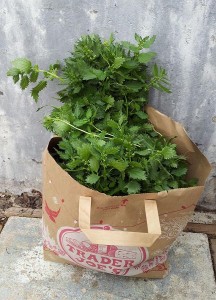
This one’s edible, as is the California native. And if you’re willing to gear up in the kitchen with thick latex gloves, you can cook with it. Try to catch the plants when they’re young, even earlier than the ones in this shopping bag if you can get them. As you pull and prepare them pay special attention to unprotected forearms. Save “Feel the burn” for your next trip to the weight room.
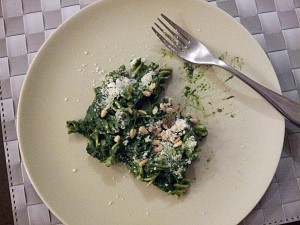
This, my concoction–fairly unseasoned so as to serve as an introduction to fairly pure nettle flavor–wasn’t exactly one for the recipe blogs. It was like eating the color green from a tube of paints made from pure chlorophyll. Actually, before I cooked with it, I was worrying a little bit because so many of the discussions of nettle start with a long essay on its nutritional benefits. Okay, it’s good for you, but how does it taste?
But later John made up another pasta that was pretty tasty, and then followed it up with a richly-flavored variant of the many nettle soup recipes that are out on the web. Nettle has been redeemed. Good for you–but also delicious!
january anza-borrego desert garden
As far as interpretative visitor’s centers go Anza-Borrego Desert State Park has a pretty awesome one. The area has a rich mix of natural and cultural resources and histories, and the center does a good job of introducing you to some of the highlights. It’s also staffed by knowledgeable staff and volunteers happy to get you started with what to see and do.
The building itself is pretty cool in that it has a green roof–if you can call desert plants with white sand in between “green.” It’s painfully hot (and cold) much of the year, so it helps moderate the temperatures inside the visitor’s center.
Up top they’ve done a pretty good job of disguising the fact that there’s a working building underfoot. A few vents tip you off that this might not be a normal desert floor…
Immediately outside the center’s doors there’s an impressive desert garden that’ll get you up to speed on the main plants you’ll find in the area. And it’s a chance to see one of the locally rare specimens of torote, the elephant tree. Among the more common and more charismatic species:
Beavertail cactus (Is this plant’s name an oxymoron, at least in the sense that you’d never see a beaver anywhere near cactus habitat?)
Barrel cactus…
Ocotillo…
Creosote bush.
Indigo bush, too early for it to be blooming, but a wonderful vaporous texture.
Some things were already (or still) blooming. This is a nice little tableaux of brittlebush, Encelia farinosa with desert agave, Agave deserti in foreground.
And this busy tangle features red blooms on chuparosa, Justicia californica. When you encounter it later in the season the plant is leafless, but there was water enough that you could find leaves on many of its branches.
The last thing I saw blooming with any umph was this fairy duster, Calliandra eriophylla. It’s flowers are smaller, maybe a couple inches across, than those of the Baja fairy duster, C. californica, that is sold more frequently. Yes, California does have a plant that could easily be mistaken for a bottlebrush from down under.
A pond feature provided habitat for the über-rare desert pup fish. There were plenty in the water, but I guess the critters consider photographers predators and scurried off. Justin Bieber behaves the same way.
A few gallon cans lets you know that this, like any other garden, is a work in progress.
And a final shot, a nice grouping of some of the plants above, arranged to please the eye, though the plants might consider themselves a little too close for comfort. But given a little extra water and grooming, you can get away with it.
When “in the neighborhood,” be sure to check out the center and the garden.

